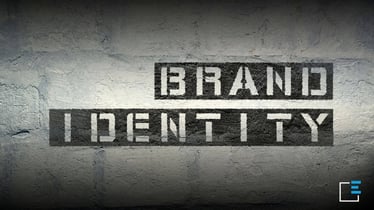At Ekeria Up we deal with content creation for lead generation, helping companies create valuable content that attracts potential customers and turns them into concrete leads. Our work is based on a targeted content marketing strategy and a structured process that combines digital content production, editorial plan management and content publishing on various social media platforms. The result is consistent, effective and conversion-oriented communication.
Content creation for lead generation
Why is it necessary to plan an editorial strategy?
In an ever-changing digital world, creating effective content is key to standing out. For this reason, every company should define a well-structured content strategy that can guide all activities related to content creation.
An online strategy provides a solid foundation on which to build brand presence: it allows you to choose what types of content to produce, in what form, with what tone, and through what channels.
The goal is to offer valuable content that is consistent with corporate identity and responds in a targeted way to audience needs. An effective content marketing strategy helps to produce content, which does not get lost in the web noise, but stands out for quality and relevance.
This phase is followed by the planning of a Digital Editorial Plan. This is the implementation of the strategy: it is decided what to communicate, how often and on which social media platforms. This makes it possible to create a solid and organized editorial plan, useful for ensuring continuity and consistency in corporate communication.
What are our services?
Another step is competitor analysis. This allows the strengths and weaknesses of competitors to be studied. From this you decide what content to create and what to avoid, in what form to display it, and what language to use.
At this point we create an editorial calendar where we decide in detail what content to publish and with what time scan to do so. Once the plan is defined in detail, we schedule all publications with appropriate platforms according to the channels.
An ongoing analysis of what you are putting in place is also part of the strategy. You have to monitor results, gather feedback, and decide whether and how to modify your strategy. Based on those changes you go to work accordingly on your editorial plan, tweaking it to optimize results as much as possible.
What benefits can be achieved with a good strategy?
- Clear focus. A well-defined editorial strategy helps you focus on what really matters. This prevents wasting energy and resources on irrelevant content.
- Audience engagement. Consistent and relevant content creates a stronger connection with the target audience. Editorial strategy makes it possible to meet the challenges of change in step with readers' needs.
- Best SEO. A well-structured strategy includes keyword research and optimized content design. This leads to better search engine rankings and increased organic traffic.
- Operational efficiency. Planning allows you to optimize your time. By knowing what and when to publish, you can organize your efforts strategically and focus on other aspects of your business.
- Brand Consistency. A well-structured editorial strategy helps maintain a cohesive and recognizable voice in all content produced. This helps solidify brand identity.
.jpg)
The site as a showcase to introduce yourself
The website is the foundation of any digital marketing strategy. It is the place where quality, well-organized content can inform, persuade and convert. Every element, from the homepage to the blog, contributes to the overall brand perception.
For this reason, we handle website content creation strategically: curated text, consistent images, eye-catching visual content, and already SEO-optimized content work together to convey your company's value.
We will help you create content that informs, engages, and drives the user to action.
What are our services?
Our agency specializes in creating website content that manages to stand out in today's landscape. We work closely with you to understand your vision, goals, and target audience.
From compelling copywriting to engaging images and videos, we ensure that every element of your site communicates your value effectively. We create content that resonates with visitors and guides them on their journey through your site.
Contact us to learn more.
Understanding in which market the brand to which the site belongs is positioned is the first step. Once identified, it is essential to conduct keyword research.
In this way of can use specific keywords for the content of the different pages, thus going to intercept the target audience in their organic web searches
Another step is competitor analysis. This allows the strengths and weaknesses of competitors to be studied. From this you decide what content to create and what to avoid, in what form to display it, and what language to use.
Once the keywords are identified, content for individual pages is made. Next, you plan the topics that will be published in a possible blog, if the website has one.
The blog keeps the site active, can increase user interest, and leads to the site having more visibility on the Web.
Based on the data you collect once you publish content, you can decide whether and how to change what has been produced.
It is important to test the content, optimize it for SEO, and figure out what works best for the target audience, while maintaining flexibility for any changes.
What benefits do you get from good content?
- Lasting impact. Well-crafted content leaves a lasting impression in users' minds. Visitors who find clear and useful information on your site are more likely to return and share the brand with others.
- Optimized conversions. Strategic content guides visitors to the desired action, increasing the conversion rate. Persuasive text and well-placed call-to-actions can make all the difference in turning visitors into customers.
- SEO positioning. Search engine-optimized content improves website ranking on search results. This increases online visibility organically and attracts a wider audience.
- Brand Consistency. Content for the website helps maintain consistency in the brand message and image. This builds trust and recognition among visitors.
- Clear information. Well-structured and informative content makes it easier for visitors to understand what the brand is about, what it is made up of, and everything about it. This prompts them to stay longer on the site and explore further.

Why do corporate blogging?
Producing valuable content to convey on the Web is considered one of the main activities to grow one's reputation and attract customers. There are several reasons why even a company can benefit from creating a blog, regardless of whether it is in the B2B or B2C sector. It doesn't matter how niche the industry is or how particular the product the company deals with is. The Web is so vast that the only problem to be posed is to find the target users or, even better, to be found by them.
The writing part of the blog
Once the article crawling is defined, we move on to the writing phase. When writing texts, there are various parameters to be taken into account in order for search engines to index the blog page and rank it high in search results. So, the rules of SEO must be followed. The acronym stands for “Search Engine Optimization” and brings together all search engine optimization practices.
1. Keyword
The first thing to do for effective positioning writing is to find the keyword on which to position the article. The keyword is the keyword that is used by users to search for what they need. You have to identify, using the right tools, the keyword that best fits the article you want to write and has the most search traffic. There are two categories:
-
Short-tail keywords: “short-tail” keywords are short keywords containing between one and three words. Because they are so short, they are generic. This means they attract more traffic but have more competition because they are more widely used.
-
Long-tail keywords: “Long-tail” keywords contain more than three words, which makes them more specific. They bring less traffic, but allow for less competition. This makes it easier for the article to appear high in search results.
2. Titles and subtitles
The chosen keyword must appear in the title. It is even better if it is placed at the beginning, but it is not a necessary condition. You can also write titles that do not contain the keyword, but of course they will be disadvantaged. The title, in any case, can also be written once the article is finished.
The blog article should be divided into paragraphs, which usually should not exceed three hundred words, preceded by subheadings. These must call out the content of the article, meaning that at least two of them must contain the keyword. It is good to have a title, only two subtitles and several sub-subtitles, but not to exceed.
3. Content
As for the actual text, there are several guidelines. The length must be at least three hundred words. Shorter texts may seem easier to read, but search engines do not consider them long enough to actually contain the answer to the searcher's needs.
Search engines favor hypertexts, that is, texts linked to other texts. For this, links must be present within the text. These links must be:
-
Interior
-
Exterior
Internal links are links that refer to pages within the blog itself. External links refer to blogs, sites, platforms outside the website. It is important that these pages are authoritative sources, or the article will be disadvantaged. However, the number of links should also not be exaggerated. A good number can be two internal and two external ones. As internal links, you can include call-to-actions in the article, which will refer to the contact page and encourage contact between user and brand.
Bulleted lists and bold words can be used to aid reading of the text. It is not recommended to use underlined words, because they look too much like words with a link and would lead the reader to confuse them.
One detail not to be forgotten is the images. A cover image should be included that is consistent with the content and those of the other articles. This way, as you browse the site and land on the blog page, you will see a concordance between the various articles. It is good to include images or videos within the text as well, but do not overdo it, or the written content will take a back seat. Images should be renamed with the title of the article and the name of the site to which they belong. In some cases you should also reduce their weight so as not to slow down the loading of the page.
Finally, the meta description must also be taken care of. This is the short description that appears below the main title in search results. It must briefly summarize the article, enticing users to read it, and it must contain the keyword.
4. Promotion on social media
To complete the work and sponsor the content created, you can integrate communication the re-sharing of articles on social. Some socials do not allow previews, such as Instagram, but others do. We are mainly talking about Facebook and LinkedIn, the main socials on which to communicate your brand. Along with the re-share link, it is a good idea to briefly describe the content of the article, including a final call-to-action.
Steps to follow to write a blog
Keeping a blog, therefore, requires constancy. It is work that must be done over the long term, with a view to building a good ranking as time goes by. In fact, it is unthinkable to get great results in a short time, but perseverance pays off. Various steps can be followed to organize and carry on a blog.
The first thing you need to do is to define the target audience you want to intercept, which is the same as the one the business is targeting.
Who might be interested in the business you advertise on the site? Is there a specific language to be used? Can specific terms belonging to the industry be used, or is it better to use simpler formulas?
The questions are many and all serve to give guidelines to follow in writing. In this way, the articles will not only fit the target audience, but they will maintain consistency among themselves and with the site to which they belong. They will also fit with what is the brand identity in communicating information.
After defining the target audience to be addressed, it is good to plan the PED. The acronym stands for “Digital Editorial Plan,” and it is a document that is used to plan the content that will be published online, with the aim of achieving a specific goal.
Through the PED, one can plan the days on which to publish and the relevant topics to be covered. Eventually, one can link back to anniversaries and holidays, declining articles according to these as well, if they are consistent with the brand and the topics it could cover. A time scan also helps to get organized with the writing work.
For the effective writing of blog articles, it is essential to first inquire about the topics. Once you have gathered all the necessary information, you need to structure the article with titles, subtitles and paragraphs. Within these should be inserted the keywords for that specific article.
Various images or videos should also be included in the article to better describe the content or support it, as well as the addition of a cover page. In addition, links referring to the site itself and to external sites should be inserted. This will enrich the page.
Once the content is finalized and approved, the articles should be planned and published on the blog. To give the article more visibility and prominence, increasing its traffic, it is good to re-share it on the brand's social platforms.
Some socials do not allow link re-sharing, such as Instagram, but one can always make dedicated posts and stories that link back to the brand's site. On others, such as Facebook and LinkedIn, re-sharing the article allows you to preview it.
The latest News from Ekeria Up
In our Blog you can read the latest articles with trends from the digital world, written by our experts.

Brand Identity esempi di successo

Analisi clienti per ideare contenuti
